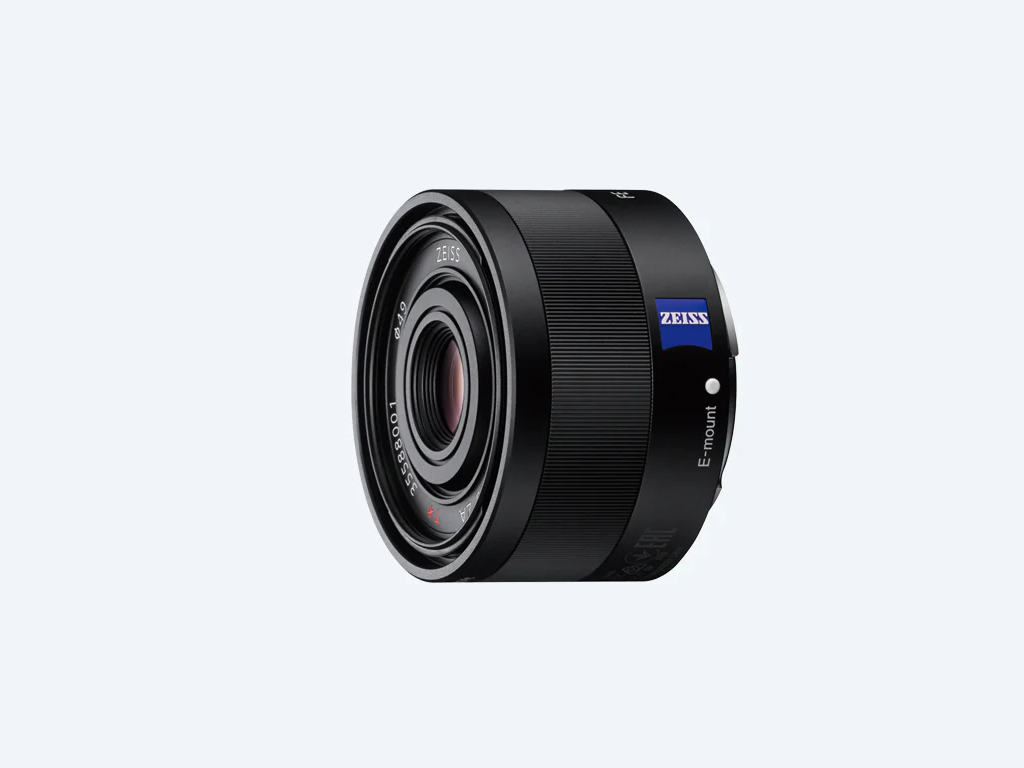
The Sony Sonnar T* FE 35mm f/2.8 ZA is a high-end lens designed for Sony’s full frame cameras like the a7 III and the a9 II, but it is also compatible with Sony’s other E-mount cameras like the , the a6100 and the a6600. It’s a lens that aims to satisfy the needs of professional photographers and serious enthusiasts alike. But for many enthusiasts the question is: “Is it worth upgrading the kit lens that comes with my camera?” Today I’m going to attempt to answer that question in a totally unbiased manner.
Here is my short unboxing video:
Carl Zeiss Quality
Sonnar is a type of lens design proprietary to the Carl Zeiss company. Carl Zeiss is one of the oldest and most respected optical manufacturers in the world, founded by the eponymous Mr. Zeiss not long after the photographic process was invented (which was around 1839). Sony partnered with the venerable German company in 1996 and now manufactures its Zeiss branded lenses in Japan to the standards of the Zeiss company. “ZA” refers to Zeiss Alpha; lenses with this designation are among the best that Sony makes, on par with it’s G lenses.
The “T*” refers to a special coating which is applied to only the very best Zeiss lenses, that virtually eliminates lens flare, internal reflection and light scattering.
Prime Lens: No Zooming
The Sonnar 35mm lens is a prime lens which means that it has a fixed focal length and cannot zoom in or out like the kit lens you get as standard with most cameras. Many casual photographers see this as a disadvantage, but serious enthusiasts and professionals alike know that prime lenses produce images of exceptional sharpness and clarity. One of the reasons is that prime lenses contain fewer optical elements than their zoom counterparts, which means less distortion of the light passing through the lens. Prime lenses are also more compact, and therefore easier to handle and carry around.

Street Photography
35mm is a focal length favoured by many street photographers because it’s a great story telling lens. The wide angle view allows you to capture more of the scene in front of you than, say, a 50mm lens. Street photographers are often looking for fleeting moments and don’t always have time to move back or change position in order to get the perfect composition. Shooting with a wide angle lens gives you more leeway in terms of getting the shot, and you can always crop your image later on to hone in on the important elements.
Minimalist Design
Right out of the box, I immediately noticed the minimalist design of the Sonnar 35mm lens. Some lenses have a switch for manual or auto focus modes, dials which indicate focusing distance, and some even have controls that allow you to change aperture. The Sonnar 35mm is sleek and sparse, without even a single piece of functionality incorporated, besides the focus ring, which rotates very smoothly. The reason there’s no focus distance indicator is because this is a focus-by-wire lens, which means everything happens electronically. When you turn that focus ring, it sends a signal to the camera body which then triggers the movement of the optical elements within the lens. The focus ring actually turns indefinitely in either direction, even when the focus distance is at its minimum or maximum.

Build Quality
The Sonnar 35mm isn’t the most eye-catching lens in the world, and as with their camera bodies, Sony has prioritized function over form here. It is quite a small and unassuming lens, and pretty light. However, there’s no doubting the build quality. It’s always nice to feel cold metal as opposed to plastic when you pick up a lens. The glass element at the front of the lens is very small, and the lens hood actually obscures much of the front of the lens, which is unusual.
Judging Lenses
There are a few different criteria by which photographers rate lenses, primarily sharpness, chromatic aberration and distortion. In order to judge these criteria with any degree of certainty you have to do some “pixel-peeping”, i.e. looking at your images zoomed in, basically to 100%. This is kind of an unnatural thing to do, because the point of photography is to make prints, and what you’ll see on the print is not the same as what you’ll see on the screen. Nevertheless, you should expect an overall higher quality image from a high-end lens.
And indeed the Sonnar 35mm does produce beautiful images, of exceptional sharpness and clarity. To do a side-by-side comparison I took a photo with the Sonnar 35mm and anther with the 28-35mm kit lens.


As you can see, it’s very hard to tell the difference, which is not to say it doesn’t exist. When I did zoom in to 100% the difference in sharpness was noticeable, but it is possible that my focus distance was not exactly the same, which would make this an invalid test! Lens sharpness testing is actually a science, and while I have no doubt that the 35mm is sharper than the kit lens, I’m not sure it is making a huge difference to the image.
Check out my review of the Sony a7 III here
Distortion
However, there is a big difference in terms of distortion. The Sonnar 35mm is able to keep things true to life towards the edges, which is admittedly kind of difficult to see with these images, but it was very noticeable when I flicked between the two images on the back of the camera.
No Lens Flare
One of my favourite things to do is shoot portraits facing towards the sun. You get a more even light on your subject’s face, and the sun’s rays coming towards you can create some really nice effects. The downside is that you’ll often get a lot of chromatic aberration, which presents as coloured outlines. However, the clarity in these images is just amazing, absolutely streets ahead of what my regular setup produces (naming no names!). I also didn’t see any lens flare whatsoever, which I actually have mixed feelings about, as lens flares can be a really interesting addition to a portrait.
Conclusion
The Sony Sonnar T* FE 35mm f/2.8 ZA is definitely a lens of supreme quality, and one that I would not hesitate to recommend to professional photographers and videographers alike. For amateurs however I’m not so sure. I think the kit lens that comes with the a7 III for example performs pretty well, and I think for the most part its shortcomings can be offset by honing one’s photography skills. At the end of the day, it’s a question of budget; the value is unquestionably there, especially if you plan to push this lens to the limit.
Check out my review of the Sony Sonnar T* FE 55mm f/1.8 ZA.


